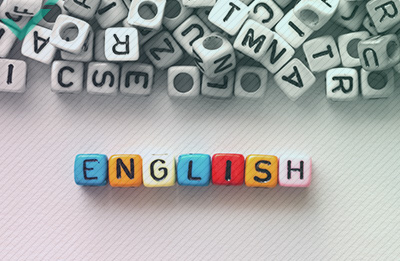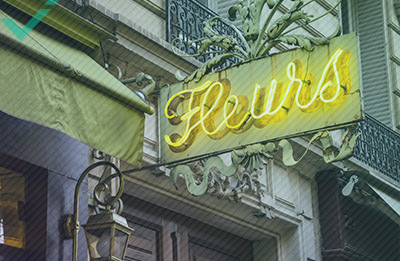On social media, your audience makes decisions in a matter of moments. The difference between a visitor stopping and reading a post, or moving on to another page is comprised of an almost magic mix of content and its multimedia supports. Studies show that people are more likely to remember a message when it is accompanied by images. When social media images are effective and consistent with the content, all posts receive double the views than if the same content was posted with just text. This is valid across all market segments, categories, and topics. Briefly, images profoundly evoke emotions; in a fraction of the time compared to written text.
VISUAL DESIGN STRENGTHENS YOUR BRAND

We assume that you have a clear business goal. Your next piece of compelling visual content must help audiences to better connect with and understand your business. Visuals also have to create the perception that your products and services, as much as their marketing channels and deliverables, are more interesting than your competitors’.
Bright, bold, and chromatically balanced visual objects placed all across the screen must identify your company’s brand with a definite and distinguishable character. Proper and professionally designed social media images greatly support your brand’s appeal through strong and memorable visual content. This helps to share your vision, expand the life of a product, sell a service, or boost an advertising campaign.
SOLID TYPEFACES KEEP YOUR BRAND CONSISTENT

Graphic elements, colours, fonts – everything visual must be distinctive and consistent, as much as written content. The fonts (typefaces) play a big role in aligning business with people’s perception of it.
Be very careful when picking your fonts. Start understanding the key differences between the “serif” and “sans serif” families of fonts, as they give a completely different look and feel to the written text. Fonts must be bright and light, even when they are black. They also must be easy to read.
Fonts are organized into families; if you pick one, you shouldn’t mix it with other families in your published content unless you are a really good graphic designer. This is what it used to be the rule until the advent of social media. Today, those old school typographic guidelines are being buried under information overload. In that case, maybe you should just feel free to mix whatever font you like and be happy as long as your audience is happy reading it.
After choosing the typographic style that best reflects your brand, quoting an image posted on social media is a good idea. You probably can do it even if you are not a copywriter. When you type a headline on social media images, be sure all the characters contrast enough with the background to be easily readable. Play around with font sizes and different colours. Try mixing light and bold fonts from the same family.
PICK SOME APPS

Every day, new software applications are released to better facilitate the social media manager. You can use an app like Tagboard to search trending hashtags and identify the ones that fit your publishing plan. After that, the well-known, solid desktop design tool Pixlr allows you to choose your image, add some effects, overlays, filters, text, and borders.
Another online design service is Canva, which offers clean drag and drop tools, pre-designed social media images and infographics. Over is a design studio app available for Android and iPhone mobile devices. PiktoChart is another useful and easy tool to design infographics. It has over 100 themes for flow charts, reports, banners and presentations. The top-class photo editing software used to be still is, and will likely remain Photoshop. When quality, cross-media, colour compliance and an abundance of tools are priorities, no other app can compete with the Adobe digital imaging software. Worth the time spent to learn.
SIZE OF SOCIAL MEDIA IMAGES

Each social network has its own styles, templates and design guidelines, therefore you should structure your content according to the best practices for each site. Header images on Twitter and Facebook are a great branding opportunity. Don’t waste it with ugly or boring social media images. Cover photos on social media can determine whether an internet surfer becomes a follower or not.
When an article is posted on various social media forums, pictures and multimedia content should be slightly varied to maintain the user’s attention. Sometimes social media sites like Facebook, Twitter and Google Plus change the format, layout, and style of their pages templates.
Here is a list of social media image sizes in pixels for the top eight social networks. Be sure to resize and/or crop your image to the proper dimensions to avoid unexpected effects.
- Twitter: Header photo: 1500×500. Profile photo: 400×400. In-Stream photo preview: 440×220. A Twitter in-stream photo can effectively brand a company’s tweet and stick it in followers’ minds. It’s time to start tweeting your social media images.
- Facebook: Cover photo: 828×315. Profile image: 400×400. Shared images: 1200×900. Remember that Facebook visual ads can only have 20% of their area occupied by written text, or they won’t be approved.
- Pinterest: Profile image: 165×165. Board display: 222×150. Pin sizes: 236-600. Pinterest limits the width of the image but not the length. It is crucial to design social media images that will stand out among the competitors’ visual content in Pinterest feeds. A coloured border can help, an easily readable text over a narrow and long, a great image does the trick.
- YouTube: Channel cover: 2560×1440. Video uploads: 1280×760. To qualify as HD quality, they must be a minimum of 1280×760. Videos must maintain 16:9 aspect ratio.
- Google Plus: Profile image: 250×250. Cover image: 1080×608: Shared image: 497×279.
- Instagram: Profile image: 110×110. Photo thumbnails: 161×161. Photo size: 640×640.
- Tumblr: Profile image: 128×128. Image posts: 570×750.
VISUALIZING BUSINESS INFORMATION

Artistic photography, creative videos, visual documents, and documentaries may further pique your visitor’s interest in your product or service. If you don’t own the rights to pictures that you wish to publish and require an external source, simply subscribe to a professional-quality stock photo service.
Sites like Pexels, Unsplash, Life of Pix and SplitShire are viable sources of pictures for free or little money. A good picture will save the time you would waste pretending you are a digital artist by just applying some filters to a flat and boring image.
While photos with faces get more attention and likes, simple screenshots with visual notes are a quick way to catch the attention just by freezing a moment on your screen and spreading the word. The more refined infographics can synthesize several concepts and messages in an easy, yet informative format. Infographics can be static, in motion or interactive. Data visualization graphics, such as graphs, pie charts, Gantt timelines, cluster schemes and workflow charts are a great way to present facts, figures, and statistics in a professional, readable and intellectually stimulating way. Infographic and data visualization style should be consistent with your overall business image.
Short comics, cartoons or comic strips might be a different way to entertain while underlining some business information. Whatever visual media you decide to focus on, be sure to always use social networks to tell a story, and ask yourself how the images you picked actually support your business goals. Finally, don’t forget that not every social network might be the right one for your business. And remember, in visual design, less is often more.


